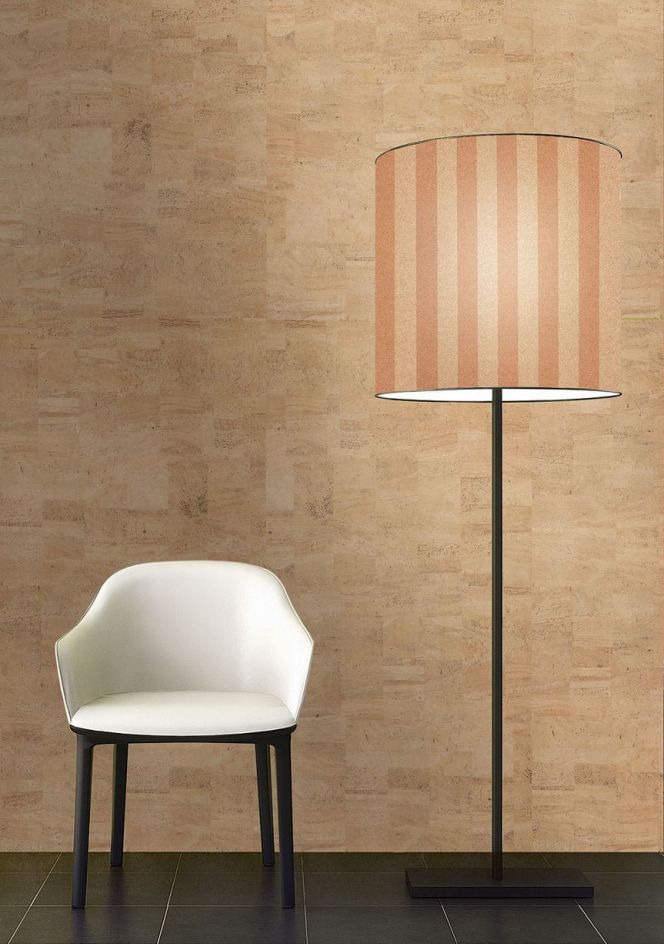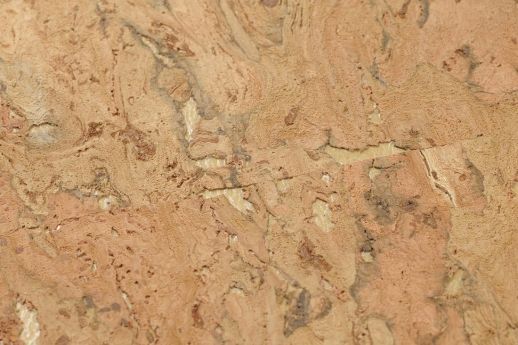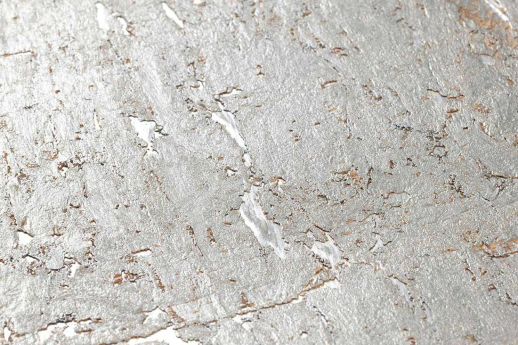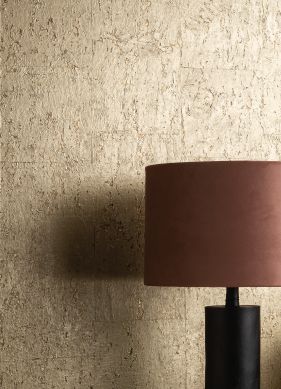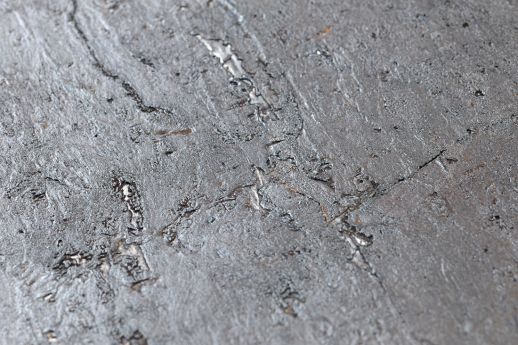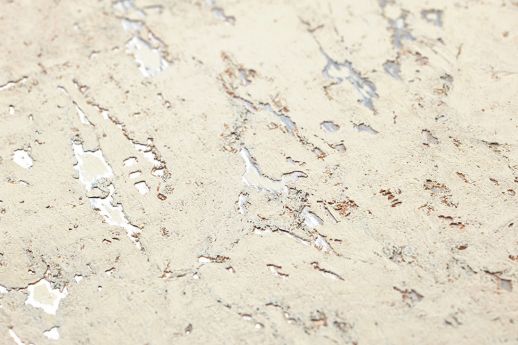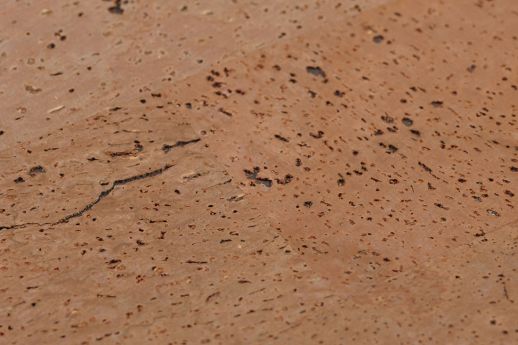Cork wallpapers complement most environments with their fantastic design structures, variety of colours and practical benefits. These natural wallpapers are made using the bark of the cork oak, a sustainable resource with fantastic characteristics in terms of both home climate and energy savings. They exude warmth and comfort, combining a love of nature with an aesthetically pleasing, modern design.
This guide blog focusses on cork wallpapers - from cork production to its use in wallpapers, from characteristics and advantages of this special natural material to tips for interior design concepts and successful application.
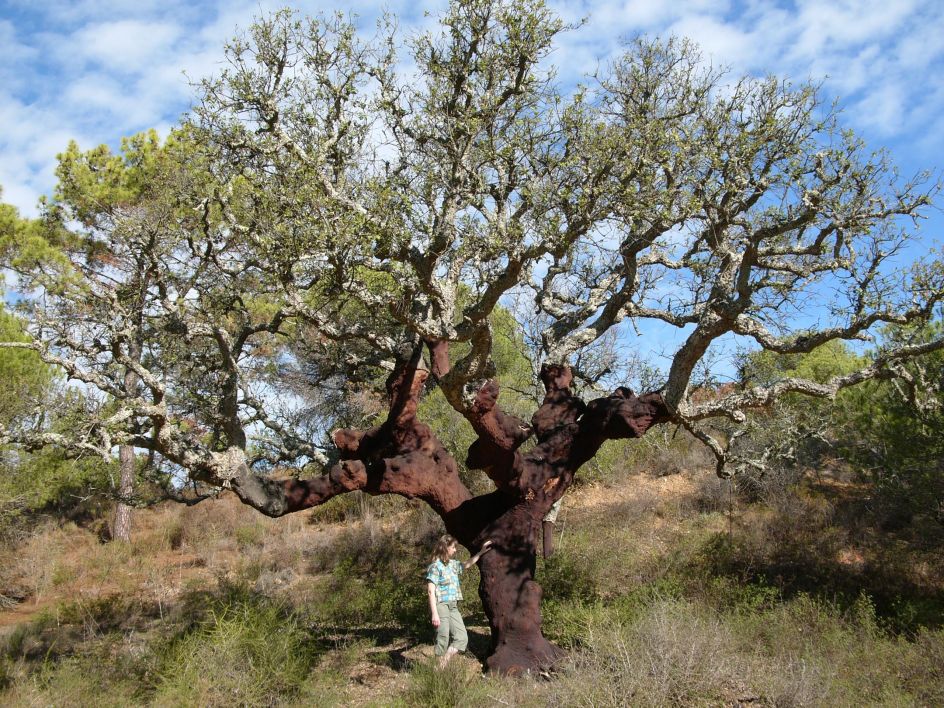
Cork - a superlative natural material
The fact that cork is "air-filled" means that this natural hard foam is uniquely suitable for a whole plethora of products. Apart from bottle cork production, this natural material provides an environmentally sound and sustainable solution for insulation and sealing materials, decorative and functional flooring, wallpapers, furniture and all manner of utilitarian objects.
Cork is mainly made from the bark of the cork oak (Quercus Suber) which is grown in sunny and warm countries like Spain, Portugal, Italy, France, Algeria, Morocco and Tunisia. Globally speaking, Portugal is the biggest producer of cork. In Asia, the bark of the Amur cork tree is the main source of cork.
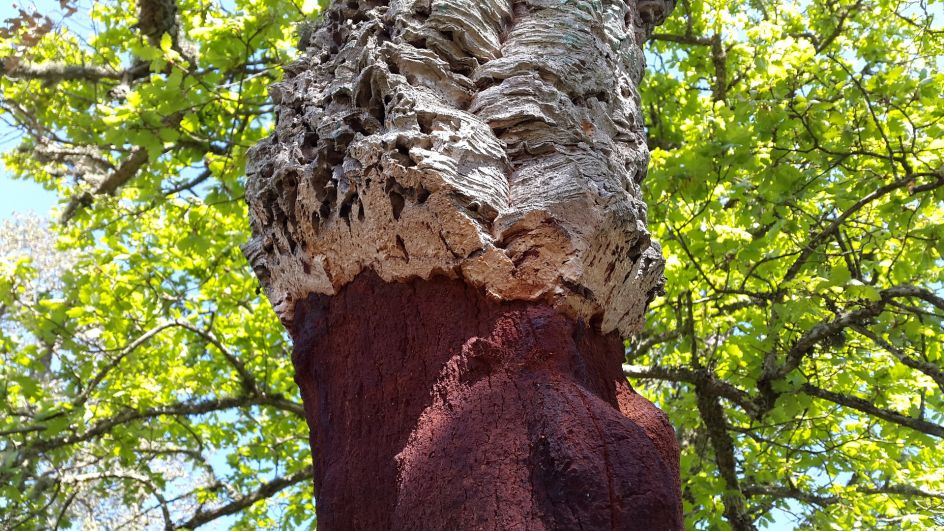
The Cork Oak - an evergreen tree significantly contributing to the protection of the environment and our climate
The cork oak is an evergreen tree which belongs to the family of oaks; it is indigenous to the western part of the Mediterranean area. Its name stems from the strong, thick layers of bark used to produce cork. Cork oaks can live up to 250 years and produce between 50 and 100 kg cork in each harvest. Very old and large cork oaks can even yield between 500 and 1300 kg in just one harvest.
This fabulous oak is the only tree that will not be damaged by removing the bark. Au contraire: peeling off the bark is actually good for the Quercus Suber as it means it can absorb three times as much CO2 than an "unpeeled" tree. If that isn't an amazing feat in terms of natural environmental and climate protection! And as if that wasn't enough, cork oaks also prevent soil erosion, and because they use very little water, they stabilise the groundwater reservoir for the regional water supply. And on top of all that, because cork is fire-resistant, cork oak forests or plantations are much less prone to forest fires. In addition, cork oak production creates jobs. After all, a large proportion of people in the countries mentioned above work in the cork industry, from harvesting to production.
Cork oak forests are precious cultural landscapes consisting of woods as well as arable and agricultural land and boasting a unique flora and fauna. The so-called cork oak biotopes are, in accordance with the EU Habitat Directive, part of the NATURA 2000 Network, i.e. a natural habitat with superlative biodiversity.
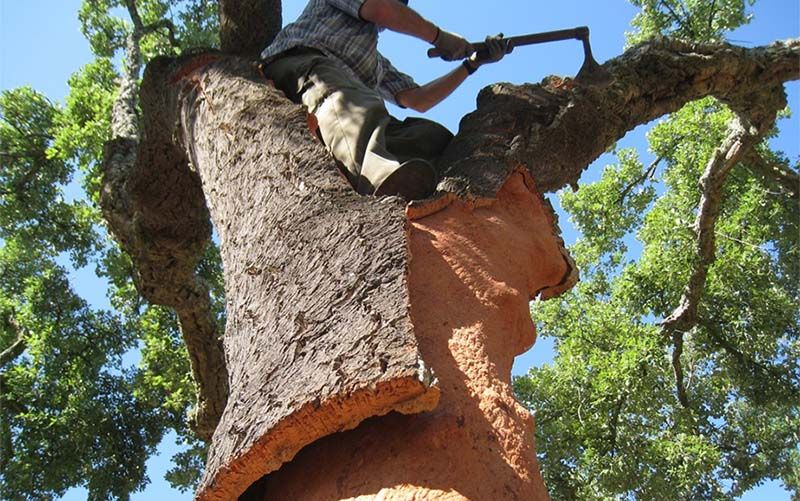
From cork production to manufacturing - a long process
It takes 25 sunny years until the bark of a cork oak can be harvested for the first time. The first peeling is also known as "virgin bark". Virgin bark is rough, uneven and rich in resin, which is why it is predominantly used for cork insulation panels or granulate. It takes another 8 - 12 years until the next harvest can take place (secondary cork bark). Peeling the cork bark off the tree is done manually with special cutting axes; it needs to be done carefully in order to avoid damaging the "mother layer". Both the trunk and the main branches are de-barked; this occurs during the warm summer months when the bark is easier to remove.
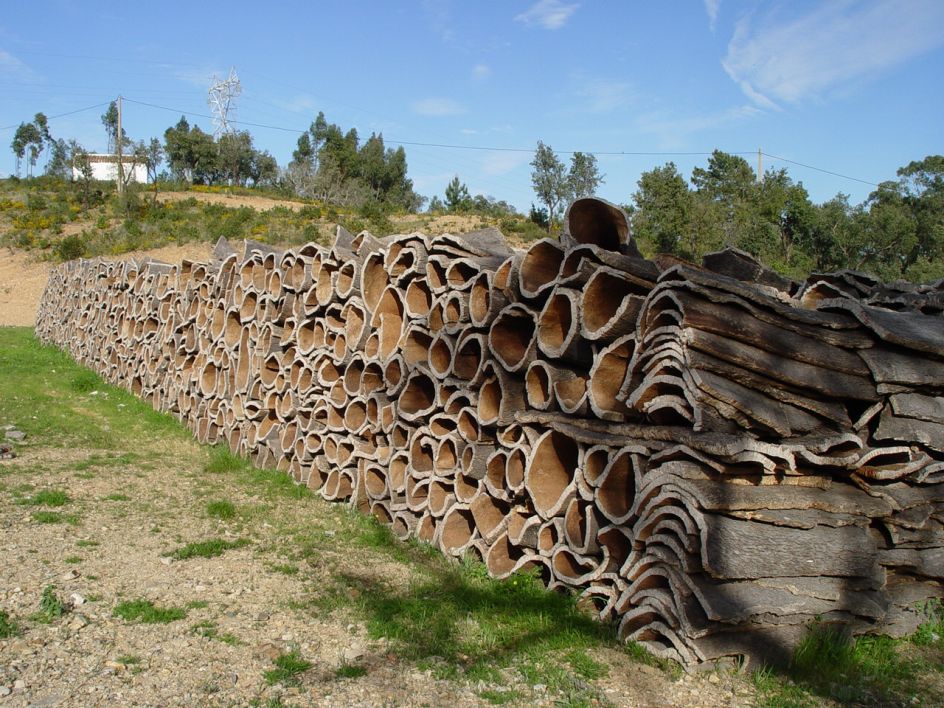
After the peeling process, the harvested bark is sorted and stacked in storage areas in the cork oak forests/plantations or close to the cork factories. It is dried in the open air for at least 6 months to guarantee excellent air circulation. After the drying process, the bark is steamed on stainless steel panels to straighten the naturally rounded shape. There follows the so-called "seasoning", a natural maturing process which involves enzymes and leads to the creation of a unique cellular structure. This process takes another 6 - 9 months. As an anti-bacterial treatment, the cork is then boiled. This increases the elasticity and volume of the material and decreases its density. The boiling water is used as a natural fertiliser. After cooling down and drying for a second time, the cork needs to stabilise for about two weeks to decrease the humidity to a degree that makes further processing possible.
It is divided into various levels of quality and can be then taken to production sites, for instance to make wallpaper. Only material of quality levels A and B is suitable for wallpaper production; level C cork is used to flooring and insulation. Cork harvest and production are subject to stringent government controls and detailed requirements by the European Cork Association which must be adhered to.

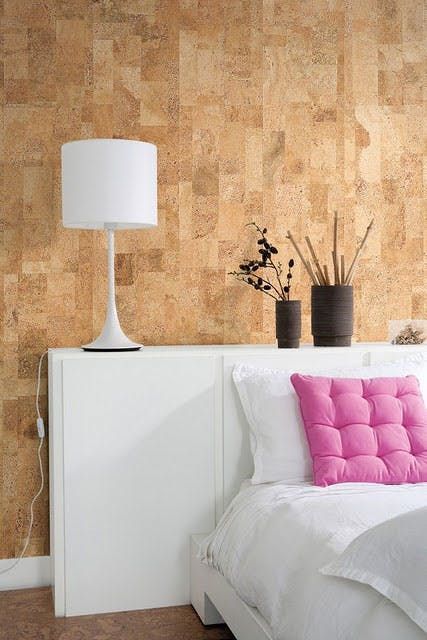
Cork in wallpaper production
Premium-quality cork is the basis for many of the design wallpapers you will find in our exclusive Nature Wallpapers range. Paper-thin cork veneers are glued to a paper carrier layer. The free arrangement of the cork veneer creates designs with natural patterns - each one is unique! The paper carrier can be dyed first. The treated cork bark is then glued on - either in its natural colour or a variety of other hues. Adding cork bark to a lacquer base offers a plethora of alternative design options.
The rolled and dried strips or lengths are cut and can be be printed on or otherwise refined. Granulated cork can also be used in wallpaper production; the fine granulate is embedded in a glue layer. Cork wallpaper is alive in every respect and it can be a true work of art for your walls, as our design wallpapers so beautifully prove.
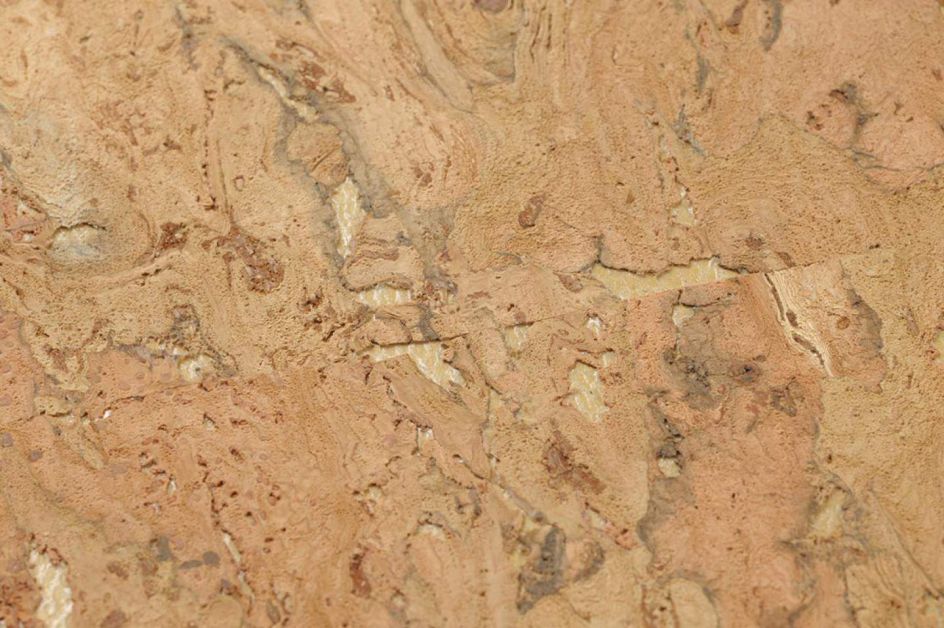
In our Wallpaper Shop, you'll find luxurious cork wall décor per running (i.e. linear) meter (0.91 m width × 1.00 m height). This means that, in terms of measurements, cork wallpapers differ from the classic roll range. Due to the material structure, their grammage is relatively high.
Cork wallpapers are hung seamlessly and boast excellent material features. Special effects and colours, either natural or more extravagant, lend irresistible appeal to cork wall treatments. Their natural structure allows for imaginative variations, for instance by adding tiny (natural or dyed) bark pieces to a lacquered background. This creates a shiny or shimmering backdrop to a matt pattern. Unusual colours like pearl-beige and gold or silver-grey add interest to elegant, sophisticated interior design concepts in homes or offices. The classic brown/yellow/reddish hues of cork can be treated and dyed to create a plethora of nuances, but they all have one thing in common: a warm, natural effect.
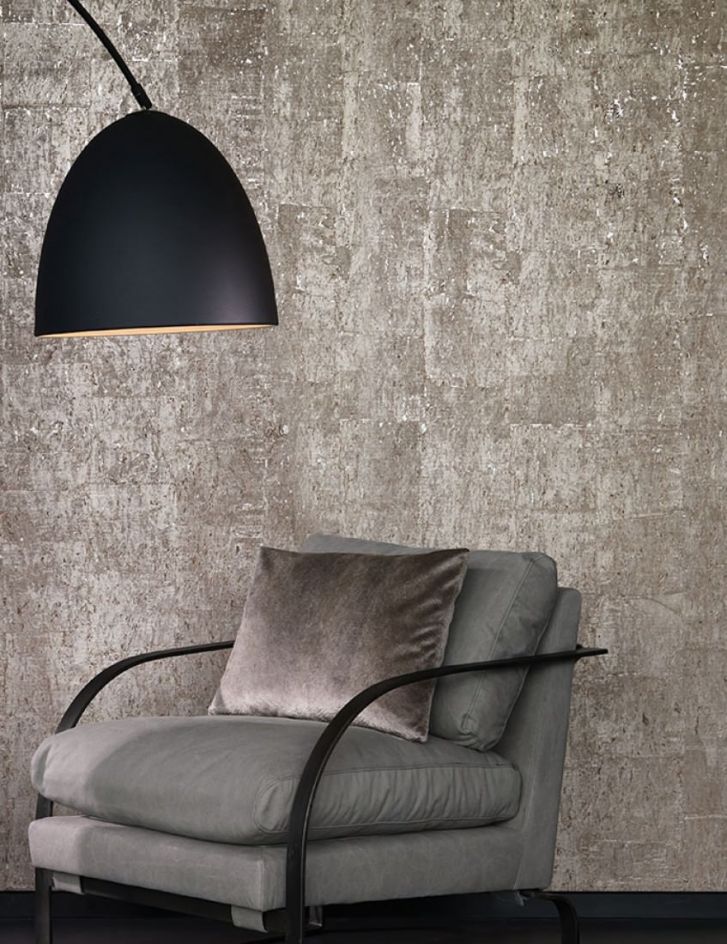
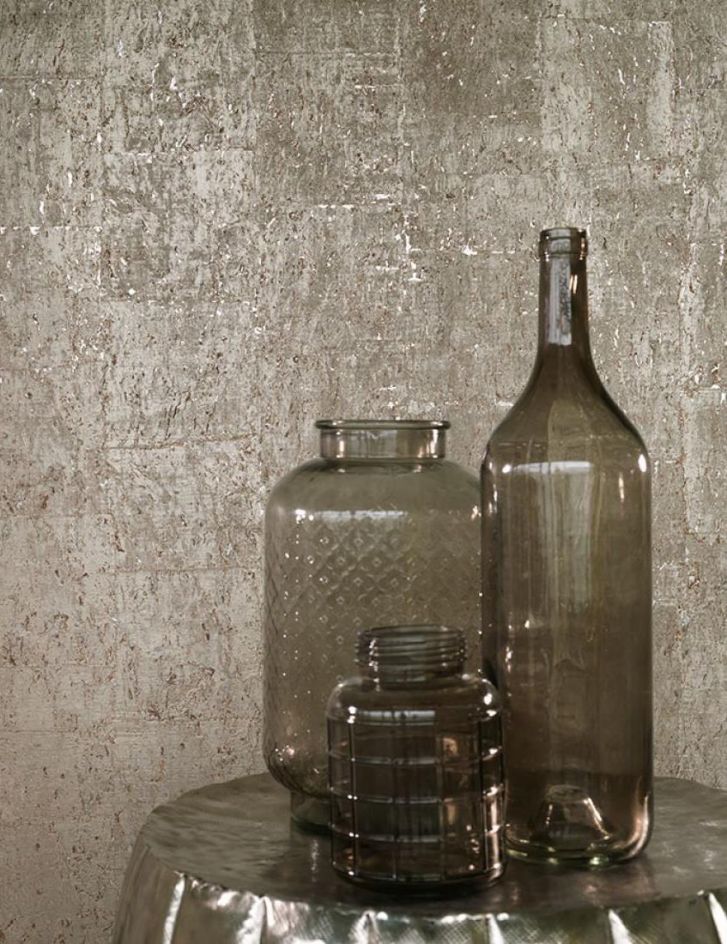
Structure and characteristics of cork and cork wallpapers
The bark of the cork oak consists of air-filled cells which are surrounded by cellulose and suberin layers. Their structure is not dissimilar to that of honey comb. An almost infinite number of air cells creates enormous elasticity and guarantees fantastic thermal insulation. Due to its low thermal conductivity, cork boasts excellent insulation properties. Cork is moisture-repellent, breathable, antistatic, antibacterial, extremely robust; it also benefits from low combustibility.
As a result, design cork wallpaper has exceptional characteristics and provides a plethora of advantages to create comfortable home or office environments:
- Soft, warm surface
- Sound and heat insulation
- Very good indoor environment conditions thanks to antibacterial and dust-repellent surface qualities and excellent moisture control - particularly suited for people with allergies
- Robust, even when it comes to minor damages as they will hardly be visible within the natural structure of the material
- Easy to clean (dry)
- Light-resistant

But it's not just the "obvious" benefits that make cork wall décor a favourite for both home and commercial environments. Its premium quality - the result of an elaborate harvesting and manufacturing process that protects the environment and the climate, as well as the fantastic properties of this versatile material - affords us with the reassuring knowledge of living in a healthy and sustainable ambience. Cork wallpapers add to our quality of life and have a positive impact on body and soul. Once one is aware of the ins and outs of cork production, the (slightly higher) price for this quality material comes as no surprise.
Cork wallpaper: ambience, harmonious interior design, styles
A feature wall with cork wallpaper creates a sense of comfort and warmth, and due to the large variety of colours on offer it is suited for a huge number of individual design concepts. Having said that, cork wallpapers can be challenging when it comes to colour combinations and they do not match just any bright contrast colour. All hues of white, light grey, warm brown, orange-red and beige nuances, honey yellow, subtle gold accents and fresh olive green are ideal partners for furniture, flooring, the remaining walls and the ceiling. Their natural quality is a main feature of all cork wallpapers, but they can be given a modern twist by adding metal and glossy effects.
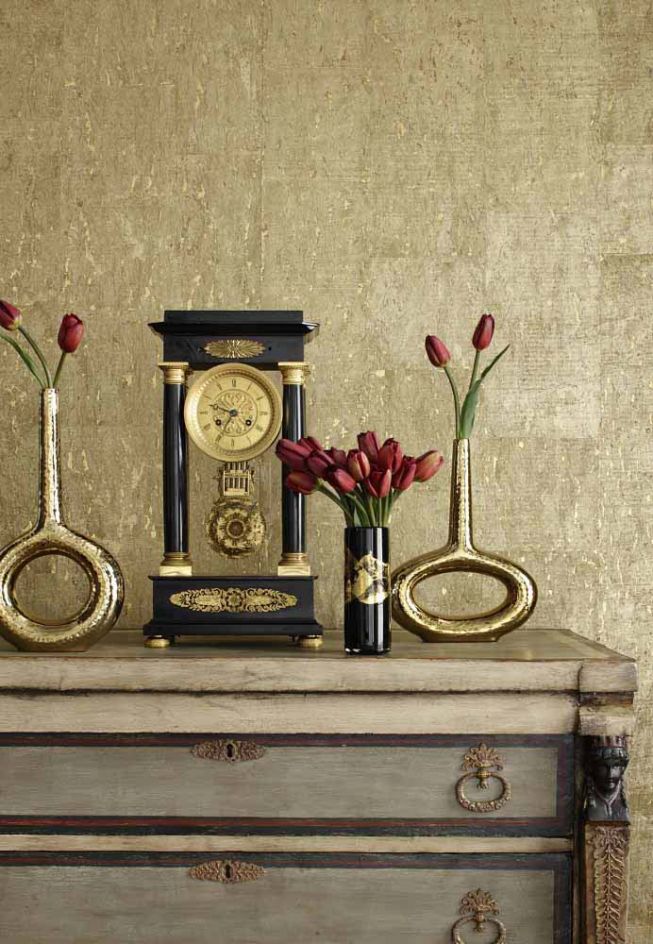
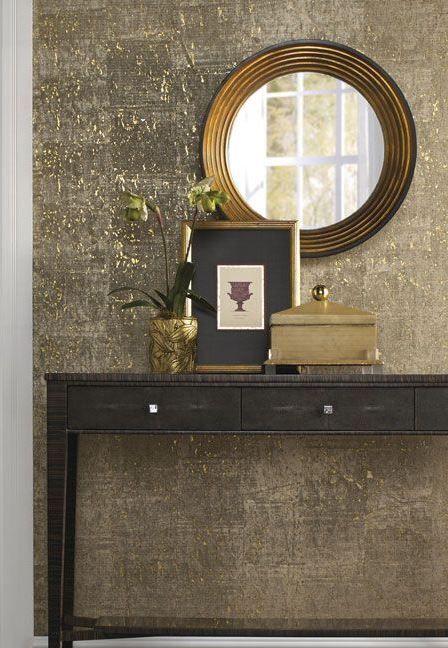
Cork wall décor has a warming effect on the soul, but also on the factual physical perception. This is why a cork feature wall is particularly well suited for areas that are close to the body, e.g. behind the sofa or bed, or by a desk or workbench. This way you can feel the warming qualities very clearly as cork wall treatments store (and radiate) heat.
Cork wallpapers have a strong impact on any room and will add a certain je ne sais quoi to many interior design styles. They are particularly popular in various vintage looks like Shabby Chic, Industrial Design, Mid-Century Style or the Scandinavian Look. Minimal purist living concepts, for instance with charming Asian elements or a modern take on the Country Look, benefit from a wallpaper made with premium-quality cork oak bark. It is also a perfect match to the trendy yet sophisticated Neo-Baroque style. One exceedingly successful example for the perfect Neo-Baroque look is our model Natural Cork 03.
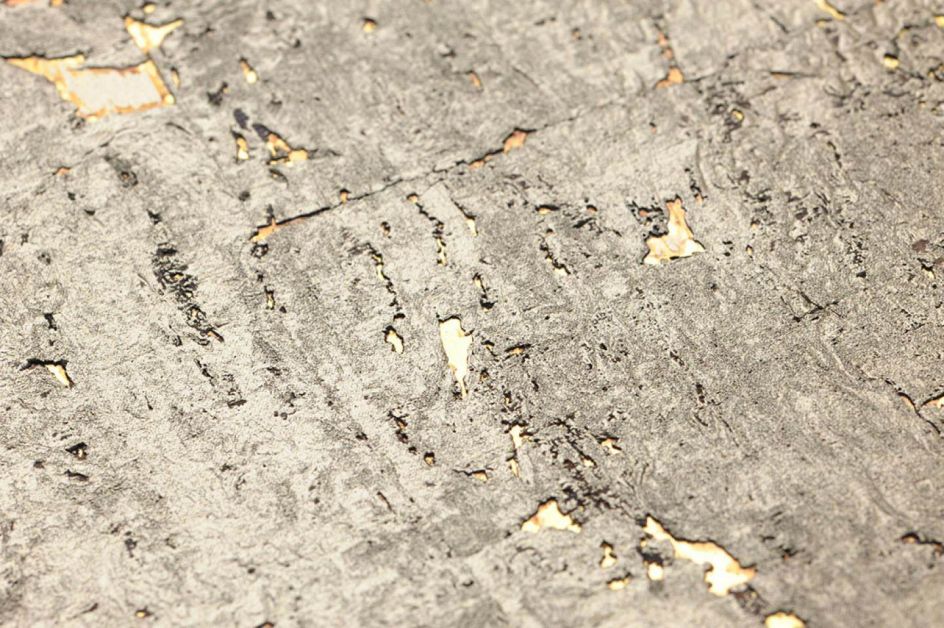
Cork wallpapers in bathrooms and kitchens
Are cork wallpapers suitable for rooms that are prone to dampness and increased humidity? Good question, and one would be forgiven for thinking that the answer is yes. However, despite being water-repellent, cork absorbs small amounts of humidity. If cork is exposed to frequent or continuous moisture penetration - as is the case in bathrooms and kitchens - the material can suffer as its structure might swell or become encrusted.
The premium wallpapers made from cork bark we provide in our Shop are labelled "water-resistant", i.e. they are not washable. Their surface isn't sealed or treated with special coatings (wax/lacquer), like you would find in cork flooring for wet rooms, for example. In rooms with high humidity, cork wallpapers are therefore not a suitable solution.

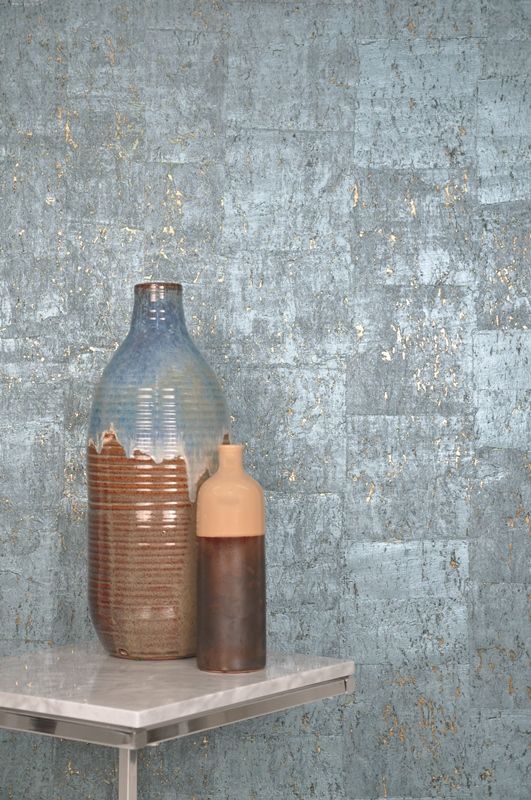
How to hang cork wallpapers - important tips for perfect results
All cork wallpapers you can find in our Wallpaper Shop have a premium-quality paper-carrier. When it comes to wallpapering, an adhesive for heavy paper-based wallpapers is required. You will find all necessary information in the inlay sheet that comes with your product. When putting cork wallpapers up on wooden surfaces, adding 10% dispersion adhesive has proven to be the perfect solution.
If you are hanging wallpaper for the first time, we recommend our Wallpapering Guide How to hang paper-based wallpaper. It will help you through the process and will make putting up cork wallpaper a doddle. In addition, we have collected a few useful hints and tip to make your wallpapering project easier:
- Store the wallpaper rolls in a cool, dry place, preferably at room temperature (i.e. not in damp or very warm or cold rooms). This way, the natural material will be able to acclimatise and extreme fluctuations (in terms of humidity and temperature) - which could have an adverse effect on structure and shape - can be avoided.
- When cutting the lengths, make sure the edges are cut accurately so that they don't become frayed and the thin cork veneer isn't ripped along the cutting lines. Be equally careful when cutting round window recesses, door frames and close to the floor and use a good quality, sharp cutting tool.
- If at all possible, this should be a two-person job because the lengths, once soaked with wallpapering paste, are fairly heavy.
- Make sure you spread the adhesive evenly and don't use excessive amounts.
- Then fold and unfold the strips of wallpaper to make sure the edges do not curl up and dry.
- You need to stick to the same soaking times (see instructions on the packaging) for all strips/lengths of wallpaper.
- Cork wallpaper can be hung seamlessly. The lengths need to be flush. Smooth them down carefully with a soft foam or rubber roller or a clean, dry cloth.
- Avoid adhesive stains on the cork side. If they do occur despite your best efforts, gently dab at the area in question with a slightly damp sponge while the adhesive is still wet. Do not rub.
- Natural wallpaper require careful drying, i.e. room temperature, no draughts. If cork wallpaper is dried too quickly (overheated rooms, direct heat) or too slowly (high levels of air humidity or very cold rooms), it can be damaged. The very structure of the cork material could be adversely affected.
- Make sure that the room where the cork wallpaper is hung has ideal levels of temperature and air humidity in order to prevent damage in the long term.
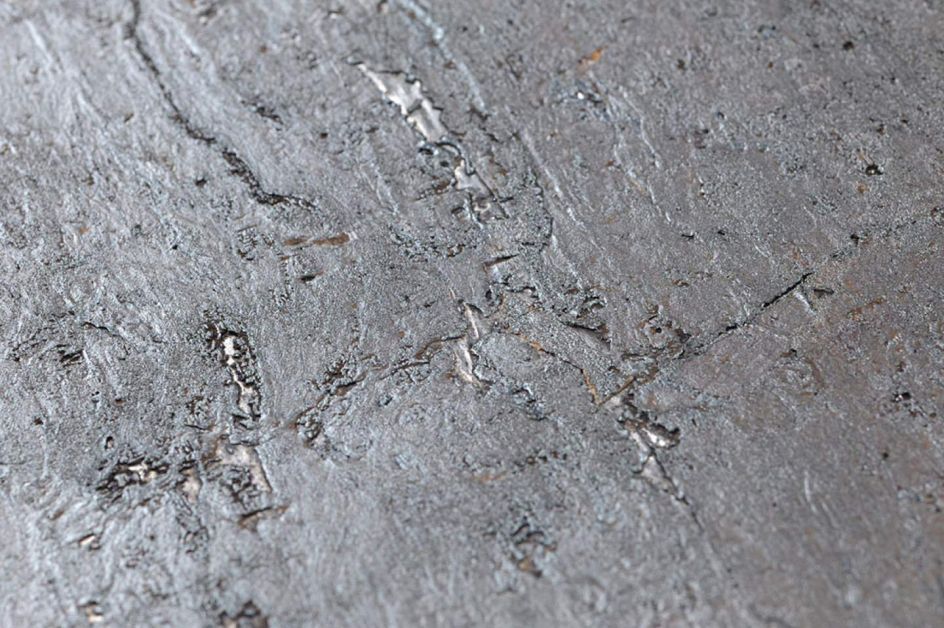
Care and cleaning characteristics of cork wallpapers
Design cork wall décor labelled "water-resistant" can only be cleaned dry. As this specific material is dust- and dirt-repellent, the cleaning and care efforts are minimal. For coloured cork wallpapers, simply use a lint-free cloth to wipe off any potential dirt deposits. Natural cork bark can be cleaned with a soft baby brush. Should your lovely cork wallpaper be soiled with wet or damp substances, immediately use an absorbent cloth to wipe them off and to dry the affected area carefully.
